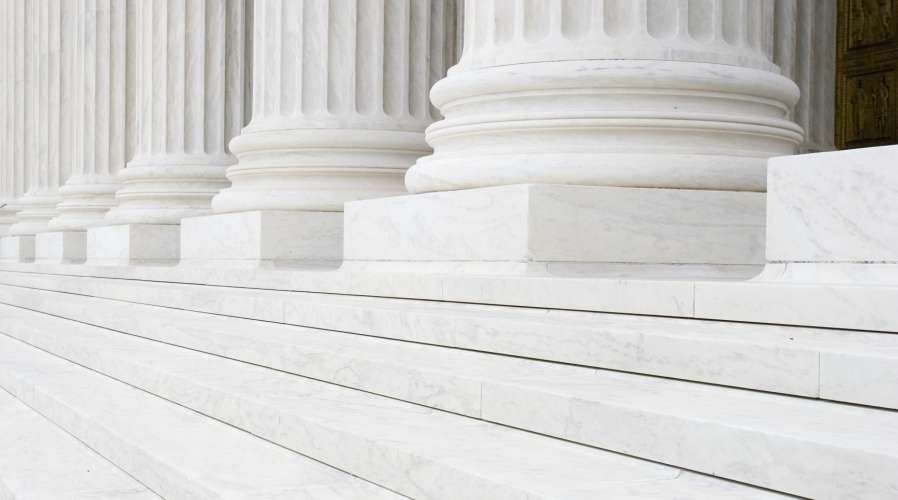
(8 min read)
On 1 January 2025, the UK's new regime for regulating digital markets, set out in the Digital Markets, Competition and Consumer Act 2024 (DMCCA), came into force. Since then, the Competition and Markets Authority (CMA) has wasted no time in using its new powers, with investigations into Google's search and search advertising activities, Google and Apple's mobile ecosystems, and provisional findings in the CMA's cloud market investigation. At the same time, however, significant publicity has been generated by the Government's decision to replace the CMA's former Chair, Marcus Bokkerink, with Doug Gurr, formerly of Amazon's UK and China business units; and it remains to be seen whether this change in leadership will lead to a change in approach. In this blog post, we summarise the CMA's busy January and even busier year ahead and what this might mean for businesses across various sectors with touchpoints into digital markets.
The new digital markets regime: designate-then-regulate
In our DMCCA briefing series, linked here, we summarised the key features of the UK's new digital markets regime. In short, the DMCCA sets up a 'designate-then-regulate' system in which the CMA will, following an investigation:
- Designate firms that it concludes have "strategic market status" (SMS) in relation to a particular digital activity. SMS is to be determined in line with an objective turnover-based test and more subjective analyses of "substantial and entrenched market power" and a "position of strategic significance".
- Regulate designated firms, either through bespoke conduct requirements (CRs) or by launching mini market investigations with a view to remedying any harmful effects on competition (dubbed "Pro-Competition Interventions", PCIs).
The first two SMS investigations
With the digital markets regime going live on 1 January 2025, the CMA showed little signs of a New Years Day hangover. On 7 January, the CMA set its roadmap for 2025, with two investigations to be launched in January and a third later in the year (likely in May/June)[1]. True to its word, the CMA launched its first investigation – into Google's general search and search activities – exactly one week later [2]. The following week, the CMA fired the starting gun for its second investigation, this time into Google and Apple's mobile ecosystems, broadly capturing operating systems, app stores and mobile browsers [3]. Both of these investigations build on the CMA's prior work in relation to these services (described further below).
A few key points are worth noting in relation to these two investigations.
- Déjà vu?: The CMA has made a fast start to 2025, but it is also fair to say it had quite the head start. The CMA's Digital Markets Unit (DMU) has operated in shadow form since April 2021, and the CMA has already extensively investigated digital markets through various other guises. In particular, the CMA has already carried out in-depth market studies into digital advertising [4] and mobile ecosystems [5], and is carrying out a market investigation into mobile browsers and cloud gaming [6]. In the process, the CMA has gathered significant volumes of information and, in the case of digital advertising and app stores, trailed that it would use the digital markets regime to take further action. This context is critical in understanding how the two latest SMS investigations are likely to play out…
- "SMS investigations", but remedies – not designation – will likely drive debate: The CMA's case pages and press releases refer to the two investigations as "SMS investigations", implying that the focus will be on whether to designate the firms and activities in scope. But as explained above, the CMA has already looked at the market importance of the in-scope services in detail via previous work, which it cites in its SMS investigation notices, suggesting it will heavily rely on this analysis when determining the concepts of "substantial and entrenched market power" and "strategic significance" in the context of designation. Simply put, its thinking is already well advanced in relation to these issues, even if the framework in which market power was previously looked at was subtly different, and we can expect the CMA to rely on its prior thinking and evidence gathering once again.
Instead, it is the potential remedies – which the CMA has signalled it will investigate "in parallel" to considering designation – that are more likely to be the focus of attention and efforts. And when considering what remedies are 'on the table' in the coming months…
- ITCs will set the tone – especially on proposed interventions: Like a market study, both investigations have been launched alongside an "Invitation to Comment" (ITC) document setting out the scope of the CMA's investigations, the key issues that will be explored and the potential interventions that are under consideration. The Google search/advertising ITC consultation has now closed, with the Google/Apple mobile ecosystems IT consultation due to close on 12 February. The ITCs dictate the tone and battlegrounds for the months to come, focusing the minds of the parties and other key stakeholders on a range of key issues. In the context of market studies, initial responses to ITCs are crucial in setting the parameters of the debate given the CMA's subsequently limited time-frame to gather further evidence, reach a decision and write up its conclusions. Across its two ITCs, the CMA outlines a long list interventions under consideration across search, search advertising, mobile operating systems (e.g. iOS and Android), app stores (e.g. Play Store and Apple App Store) and browsers on mobile devices, touching upon a wide range of themes (e.g. interoperability, transparency and fairness) inter-playing into a number of adjacent sectors (e.g. digital wallets, apps and alternative payment methods).
- Process and pinch points: The CMA has 9 months to carry out its reviews, meaning final decisions are expected in October. Much like a market study, we expect the work required by the parties and third parties to be 'front-loaded', with the CMA gathering high volumes of information and evidence early on in the process via requests for information to the parties involved and requests for views from wider stakeholders via its ITC consultation. The CMA will spend much of the time that follows digesting this evidence and rapidly formulating proposals which will then be tested with the parties via a provisional decision and further consultation. Note that the CMA will already be well advanced in its thinking and its evidence base following on from its previous market studies and enforcement action and will be expected to rely heavily on this previous work for the sake of expediency.
The CMA's 9 month review timelines do not tell the full story. Experience in the EU with regards to its digital markets regime suggests that there may be judicial challenges to the CMA's decision-making which could further delay actual implementation of any designations and remedies.
CMA's verdict on cloud market
Less than a week after its second SMS investigation, the CMA published its provisional decision in its market investigation into the supply of public cloud infrastructure services in the UK – which has ultimately trailed another SMS investigation in the pipeline [7].
The CMA's investigation in relation to cloud services again builds upon a significant body of prior work. The CMA's market investigation directly follows on from an initial market study carried out by Ofcom, allowing it to borrow on the latter's sectoral expertise. The CMA has also previously looked at cloud gaming in the context of its Microsoft/ Activision merger review, and can also learn from the French Autorité de la Concurrence's in-depth review into cloud services. For a more detailed overview of the various competition law developments in relation to cloud services, please see our blog post here.
Even though the CMA's findings are only provisional at this stage, the report remains a highly-significant piece of work. The report numbers 513 pages accompanied by no less than 23 appendices and builds on the detailed market study already carried out by Ofcom. In its report, the CMA has identified various provisional concerns with the cloud market, including a lack of viable competitors to Amazon Web Services (AWS) and Microsoft, various barriers to switching or multi-using cloud providers or entering/growing in the market, and evidence that customer switching (and efforts to entice customer switching) is even more challenging in the context of Microsoft software customers using Microsoft cloud solutions.
The CMA's key recommendation is that it should use its DMCCA powers to consider SMS designation and subsequent remedies to resolve the concerns identified. The CMA's statutory deadline for a final decision is 4 August 2025, which suggests that the third SMS investigation trailed for 2025 will cover a different topic unless the CMA's cloud market investigation process is curtailed.
The growth agenda
In and amongst these developments, the Government has provided a strong steer that the CMA must focus on growth when choosing whether and how to enforce. The CMA's work in relation to digital markets is likely to be especially closely scrutinised because the regime is nascent and therefore unconfined by previous precedent, with any remedies proposal likely to generate strong policy arguments from both sides of the debate on so-called "big tech".
On 23 January, shortly after Marcus Bokkerink's dismissal and on the same day as the launch of its second SMS investigation, the CMA published a paper arguing that its digital markets regime can be used to drive growth by harnessing the benefits of investment and innovation by big tech firms while also "expanding opportunities for investment and innovation by creating a level playing field for start-ups and scale-ups (many UK-based) to succeed". The word "growth" appears multiple times in the CMA's press releases for both SMS investigations [8], and on 28 January the CMA also published terms of reference for a new CMA Growth and Investment Council which brings together key senior stakeholders from the business world to discuss how best to support innovation, investment and growth [9].
Final thoughts
2025 looks set to be a seminal year in the development of competition and consumer policy in relation to digital markets. The CMA has begun 2025 with extensive new powers but also a strong steer to be careful how it uses them. The ITCs published with respect to the CMA's two SMS investigations are, as with traditional market studies, likely to play a critical role in shaping the CMA's output and proposed remedies, and it is likely that both sides of this debate will seek to frame their arguments in terms of how best to support and stimulate growth in the UK economy. The CMA has chosen to prioritise two areas of the digital economy which were previously the subject of in-depth market studies for its first two SMS investigations. It has done so intentionally to build on prior work and also to ensure its early work is targeted at issues with maximum cross-sectoral impact; indeed, most businesses will have at least some reliance on online search engines, online advertising and online apps to get their products and services across to customers. Given this, the CMA's digital debut is set to be watched closely by a range of businesses, both in the UK and (given the cross-jurisdictional nature of digital businesses) overseas. It remains to be seen whether the CMA will move fast and break things with its new powers, or instead speak softly despite its rather large stick.
Footnotes






